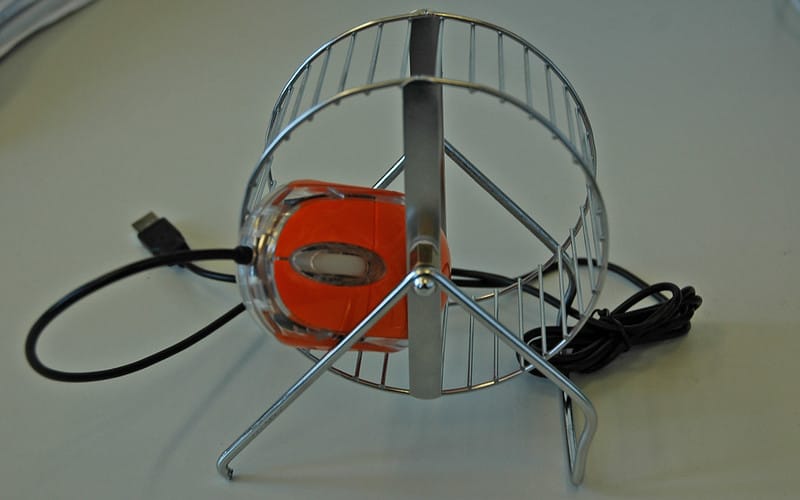Navigation is not interaction
People love learning. We love activities. But we want activities with a point. No one wants to be a pet mouse running in a wheel, or a pigeon, pecking again and again for each new piece of corn.

In the last few weeks I’ve been doing a lot of reading, looking at existing research on adult learning, learning-experience design, and UX.
I’ve looked at some things about cognitive load that I hadn’t ever wrapped my head around properly before, updated my understanding of working memory and schemas, and overall done a stocktake of my usual go-to approaches to educational design.
And out of all my reading and thinking, one thing has kept coming up that I felt like sharing today – David Merrill’s advice that navigation is not interaction (2002).
It catches something I have seen over and over, and been troubled by, ever since I first ran into online learning.
Click to reveal? What for?
How many e-learning modules have you worked through that had the words ‘Click to reveal’ somewhere? Or had each module in a series start with the same animation?
And how did you feel about it when you saw them?
I’m guessing that after the first time, you weren’t excited. Why should you have to click over and over to show your interest, when you'd already indicated it?
People love learning. We love activities. But we want activities with a point. No one wants to be a pet mouse running in a wheel, or a pigeon, pecking again and again for each new piece of corn.
So…
Clicking, or moving things around, isn’t intrinsically rewarding. If we can’t draw direct connections between online interactions and their purposes, they’re best avoided.
No matter how cool that animation looks…
What is interaction?
The main advantage for the learner of online learning is that it can provide a safe space to try things out. Interacting with the computer to see if you've understood something correctly is what it's all about.
Formative activities like quizzes, drag-and-drops, labelling activities, and so on help the learner to check they've got it, to review the learning point in a different format, and to integrate concepts into their overall understanding of the topic.
If we design online learning activities so that the learners are given regular opportunities to see if they're on the right track, and to integrate the chunks of information they're acquiring into a coherent whole, that's interaction.
What do you think? Are there particular bugbears you run into regularly?
Originally published on my LinkedIn page on 1 November 2018.

